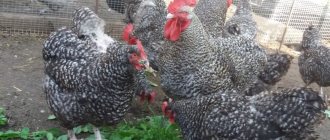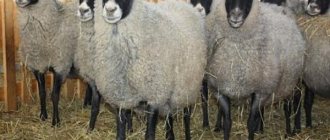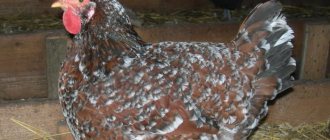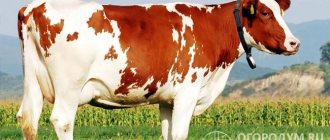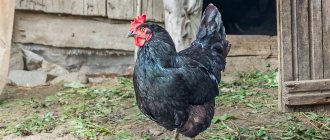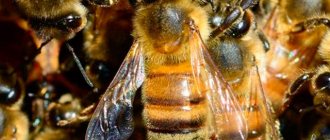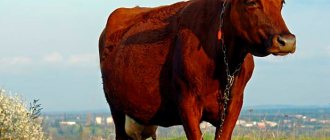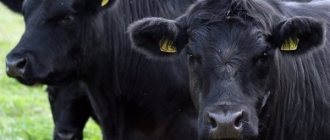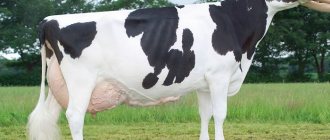Cornish chickens are one of the most popular and favorite breeds among poultry farmers. They have characteristic external features that make it easy to distinguish them from other representatives of birds. A strong survival instinct, good meat qualities, as well as adaptation to any conditions cannot but distinguish individuals from others. At the same time, it is necessary to constantly monitor the health of representatives and nutrition in order to ensure maximum productivity of the livestock. In this regard, farmers propose to follow a certain algorithm for care, maintenance and scheduling and feeding ration.
Breed characteristics
Cornish chickens have the following characteristic features:
- High productivity with good vitality and low susceptibility to disease.
- Highly developed brooding instinct. Eggs are brown and light beige.
- The mobility of the representatives is low, as is the rate of fledging. At the same time, the meat is noted for its delicate taste and tenderness.
- In everyday life, chickens are unpretentious.
Appearance
The exterior of Cornish chickens and adults is specific and significantly different from their fellow tribesmen.
- Muscular and strongly built body with a wide head and elongated neck. The body is heart-shaped, tapering towards the tail, a developed chest and short but strong legs with a wide set.
- The plumage looks smooth and dense, but, in fact, the feathers are quite delicate and airy. For the most part, the plumage is white, but there are representatives with red, fawn and dark shades.
- The weight of the birds is large: chicken - maximum 3.5 kg; rooster - a little more from 3.5 to 5 kg. For representatives of the class, this is a very good indicator.
- It is noteworthy that the Cornish has no feathers on its legs.
- The skin has a yellowish tint, as does the small beak, but the earlobes and long, narrow crest are red. In appearance there are features left over from fighting ancestors - these are pronounced brow ridges.
- Eggs with a cream shell, small, oblong shape, weighing up to 60 g
Poultry farmers value individuals with a dark color, reminiscent of a partridge. This color is called Indian.
Character
The Cornish character is calm and moderately friendly. There is practically nothing that marks them out as representatives of the fighting breed. Sometimes fights arise between young roosters, which quickly subside.
Contrary to the fighting qualities of its ancestors, this breed is not aggressive
There are also no quarrels over the female or division of territory. They coexist peacefully with each other and with other subspecies. Therefore, if you see pronounced aggression, then most likely it is necessary to remove the specimen from breeding.
Separately, we note the character of laying hens. They have a highly developed maternal instinct, so they are ideal hens. At the same time, there is timidity and wariness in the features. Any rustle can cause confusion, and as a result, the egg will be crushed.
Feeding adults
Chicks are transferred to an adult diet at the age of two months, if they are not planned to be slaughtered. You can feed them with a variety of foods, the main thing is that the result can satisfy all their needs.
The basis of daily nutrition is food with a large amount of plant proteins. Most often, specialized grain mixtures for broilers are used. Some buy them in stores, some make them themselves.
Wet mash should be made in the morning. This is due to the fact that they are absorbed very quickly and the bird will quickly become hungry again.
During the day, individuals have the opportunity to eat while walking. There they peck grass and insects. If you give the mash before bed, the bird will be hungry all night.
A large excess body weight indicates that the chicken needs to be put on a special diet. Most often, such individuals are fed greens and vegetables. These types of food replace part of the grain.
Laying hens should add more calcium to their diet to ensure high-quality egg formation.
Productivity
Initially, the species was selected to improve the taste of meat. The latter is considered a dietary product, with thin and delicate fibers.
Chickens gain weight quickly; in the first 2 months they increase to 2 kg in weight.
At the same time, there are also disadvantages of the breed - in particular, late puberty. The first time a laying hen lays eggs only at 7 or even 9 months, and the peak occurs from 1.5 to 3 years. In total, from 125 to 155 eggs per year are collected from one hen. The maximum recorded productivity was 176 units.
Due to its large mass and low egg production, the Cornish is classified as a meat breed. Chickens are in great demand for their taste and sufficient carcass volume.
This material will tell you about the best breeds of laying hens.
How they appeared
In the first decades of the 19th century, cockfighting was very common in England. Initially, the breed in question was bred exclusively for fighting purposes. This was done by the British breeder, W.R. Gilbert. He decided to cross European roosters with Indian ones. The experiment was not successful; the birds' temperament was not at all suitable for fights. But the new breed had other advantages: the birds quickly gained weight, and the meat was quite tasty.
The breed was officially registered at the end of the 19th century. Gilbert's followers called the breed Indian Fighting. Birds began to be sold in the British Isles and the USA. But soon the name had to be changed because it scared farmers. And already in 1910, the docile cockerels and hens of the Indian fighting birds turned into Cornish.
At first, there were not many fans of the breed: the bird required special housing conditions, it grew slowly, and its egg production left much to be desired. Therefore, breeders continued to work hard to improve qualities. Only in the middle of the 20th century was the Cornish recognized as the best meat breed.
Birds arrived in the USSR in the second half of the 20th century. Initially they were bred in the Belarusian SSR. Now the Cornish is a fairly popular bird in many regions of the country.
Content
Like any others, Cornish can be kept in one of two types:
- free;
- cellular.
Cages, as well as chicken coops, should be clean and spacious. It is recommended to carry out regular disinfection of premises and daily mechanical treatment.
Each of the content methods has its pros and cons:
- Chickens living in confined spaces, without free access to pasture, get sick less often and are least at risk of contracting viral diseases.
- At the same time, when kept in cages, individuals become fatter, since the lack of active movements slows down the metabolic process. This affects the functioning of internal organs and directly affects egg production, significantly reducing it.
- With regular grazing, chicken nourishes the body with natural vitamins obtained from grass, stimulates intestinal function, and also exercises a lot. In this regard, the quality and taste of carcasses are improved.
Cornishes adapt well to any climate and are not picky in their diet.
Among other things, for successful breeding, farmers recommend adhering to the following algorithm of actions:
- The temperature of the chicken coop should be comfortable, even in winter, and not fall below 10˚C.
- Eliminate the possibility of drafts, since chickens are most susceptible to respiratory diseases.
- Due to their anxious nature, perches are located in the back of the room so that no one disturbs the hens. Also, poles and high placements are not made for this breed, since the short legs do not allow the birds to sit comfortably on such structures, and the risk of injury is quite high. The dimensions of the nest are approximately 30 by 30 cm.
- In the walking area it is worth digging something like a pool filled with ash and sand. This way you will save your pets from fleas, feather eaters and ticks.
- It is advisable to prepare bedding from natural material, at least 5 cm thick, and change it regularly as it gets dirty or worn out. Read about bacteria-containing bedding for chicken coops here.
When chickens dig in the ground for walks, excessively long claws are worn down.
We would like to make a separate point about keeping chickens. They need to be given special attention, since the feather covering grows more slowly than that of other representatives, and the process takes almost 2 weeks. When cold weather sets in, the hen may not take them under her wing, thereby forcing the young to warm themselves. By huddling together, larger individuals begin to crush and injure small chickens.
From the first days, babies are sensitive to cold weather, and may even die because of it.
Therefore, when there are chickens in the chicken coop, the temperature regime is carefully monitored and is not allowed to drop below 28˚C. This can be achieved by installing an infrared lamp for the chicken coop under the ceiling.
The Cornish are not fussy about feeding; an important condition is the variety of food and the thoughtfulness of the diet in terms of healthy components. This type of chicken eats little, while quickly gaining muscle mass. To correct the fat layer, it is recommended to add corn, fresh grass and sand to your food.
Chickens
It is impossible to raise chicks without basic knowledge in this matter. From the moment they are born, chicks are highly sensitive to temperature and cannot tolerate cold.
The peculiarity of chickens is the long period of the first molt and the growth of adult plumage. This leads to the fact that chicks need longer, high-quality heating than representatives of other breeds.
In addition to hypothermia, there is another nuisance - large chicks gather in heaps during cooling and can crush smaller individuals with their large weight.
The feeding of young chicks should be intensive. Preference is given to high-calorie protein foods. If you do not follow all the rules of feeding, this will adversely affect weight gain, in addition, this may lead to developmental defects.
To fatten small Cornishes, mixed feed is used, aimed at broiler species of birds.
Rapid weight gain will occur without hormone supplements. Some factories use hormonal drugs when feeding birds, but this leads to an increase in cases of defects and diseases of the support system. However, this does not affect the quality of the carcass.
It is important to support growing chicks by introducing mineral and vitamin supplements. They will receive some of these substances from the main diet - greens, fruits, vegetables. However, this will not satisfy all needs, so there is a need to introduce additional vitamin complexes.
Chickens can also become obese. Therefore, it is worth being especially careful in choosing food and monitoring the weight of the livestock. If small errors appear relative to the norm, this is not a problem.
However, it is worth changing your diet a little. Plenty of protein and greens are the best choice for young fish.
Chickens love to drink a lot. After all, liquid controls the metabolic process, which is important for the prevention of ailments, loss of cravings for food, and deterioration in the rate of development.
We invite you to read: Description of the Oriental cat breed and its features
Raising chicks also requires some experience and knowledge. From the first days, babies are sensitive to cold weather, and may even die because of it. The main difference between the cubs of this breed is their extremely rapid growth.
By the age of 1 month they can weigh about 1.7 kg. Maximum weight is reached at 6-7 months, but they are not kept until that age. The fact is that after five months of age, the taste of a meat carcass deteriorates significantly, and that is why young animals are sent for slaughter at the age of 60-80 days.
In general, caring for babies is not difficult, but building a diet requires some knowledge. Let's look at tips for caring for and feeding young animals.
The peculiarity of chickens is that the period of the first molt and the growth of adult feathers is too long. Because of this, they need good heating much longer than others. In addition to hypothermia, there is another danger - large chicks, when hypothermic, huddle together in groups, and often crush those under them with their weight.
Young animals must be fed abundantly with high-calorie and protein foods. Failure to follow feeding rules has a negative impact on weight gain and can also cause developmental defects. To feed small gherkins, combined feeds are used that are intended for broilers.
Rapid growth is observed without hormonal supplements. Some poultry farms practice introducing hormonal supplements into the diet of babies, but in such cases developmental defects and diseases associated with the musculoskeletal system are often observed. This may not affect the quality of the carcass, but such individuals are not allowed for breeding.
It is extremely important to support growing bodies by adding vitamins and minerals to the diet. Chicks partially obtain these substances from food - greens, vegetables. But even a harmonious diet is not able to meet all the needs of rapidly growing organisms. It is necessary to introduce vitamin supplements and complex medications.
Obesity is common in chickens. Therefore, it is necessary to select food especially carefully and monitor the weight of the offspring. Small deviations from the norm tables are not terrible, but this is a reason to adjust the diet. A large amount of protein, as well as fresh greens in the diet, is the best prevention of obesity in young animals.
Chickens need plenty of water. Liquid regulates metabolic processes, and its deficiency causes malaise in chicks, loss of appetite, and deterioration in growth rates.
Care
Cornish chickens are not fussy about their care. There is no need to create special conditions for them. But at the same time, the following rules should be observed:
- The litter and the chicken coop itself must be clean to avoid the spread of any infections.
- The diet is balanced and rich in proteins, as the breed is prone to obesity. Most of the feed is grains and legumes. Then boiled root vegetables and mineral supplements are mixed in. The main stage of feeding occurs in the afternoon and morning hours.
- Regular vaccinations are carried out starting from 3 weeks of age.
- It is very important to keep the feeders and drinking bowls clean. The water is changed daily, and the container itself is installed in such a way that the pets can reach it around the clock. Read about chicken feeders here.
Where to buy Cornish chickens
There are many amateur poultry farmers in Russia who appreciate this breed and are engaged in its breeding.
The easiest way to purchase Cornish is at a poultry farm. There, from time to time, parent flocks are renewed for the production of broilers, where Cornishes are used together with Plymouthrocks, and adult birds are sold.
There is the option of specialized poultry exhibitions, where you can buy adult birds, day-old chicks or hatching eggs.
You can find and buy Cornish through private advertisements.
Breeding
Due to the large mass combined with short legs, the reproduction process itself is difficult.
Laying hens have a very anxious and timid character, and therefore reduce the risk of eggs being destroyed under the weight of the hen. Once the hen has laid the egg, the egg is given to another smaller bird or placed in an incubator, where it is kept for 25 to 32 days. How long does a chicken hatch eggs? Read this article.
The temperature is maintained as comfortable as possible, in the range of 25-30˚С.
Chickens are considered an adult from the 60th day, after which you can lower the temperature to +15˚C and remove the infrared lamp, which provides warmth and disinfection.
Advantages and disadvantages of the breed
Like any breed, the Cornish has its advantages and disadvantages.
It is worth saying that the advantages outweigh their negative traits, thereby the popularity of the breed is only growing among poultry farmers.
Advantages
- Rapid gain of muscle mass with minimal food consumption.
- The wide chest is valued for its large amount of dietary meat.
- Purebred roosters are successfully crossed with other species to improve the meat qualities of pets.
- Unpretentiousness in food and resistance to infections.
Flaws
- The industrial breeding method is in cages, which is a problem for this breed. With a sedentary lifestyle, chickens begin to get fat and problems arise with laying.
- Late puberty, a laying hen can lay her first egg only at 7-9 months.
- The short neck, combined with a powerful body, makes it difficult to destroy parasites on their own, so an ash-and-sand pool is a must.
- After 5 months of age, meat becomes tougher and tasteless.
Reviews
Egor, 42 years old. I have been breeding the Cornish breed for more than four years. I hatch chicks myself in a simple household incubator. Birds are pretty good brood hens, but they crush a lot of eggs. Survival rates are encouraging. If you feed the bird correctly, it grows in mass very quickly. In addition, individuals are excellent layers, which makes it possible to obtain not only delicious meat, but also eggs.
Olga, 55 years old. About five years ago I purchased the first individuals of this breed at a thematic exhibition. In the first year, I was able to get sixteen chickens from two females and one rooster. The chicks grew quickly and rarely got sick. The only negative is that without regular walking they quickly gain weight and become inactive. The meat is very tasty, incredibly tender. The number of eggs cannot but rejoice.
Cornish is a good breed for breeding on private farms. Excellent performance in meat and egg production, combined with ease of care and adaptation to any climate, make this breed popular among many poultry farmers.
conclusions
- The Cornish breed is a meat breed. Their meat is considered the most dietary and tender.
- Representatives of the species should be kept on free grazing, since cellular grazing causes problems with fat deposits and, as a consequence, complications of health and taste.
- Feeding chickens is quite simple, as they are unpretentious eaters. The wishes of specialists include an emphasis on legumes, grains, and food. With increased protein content.
- Due to late puberty and timid nature, nuances arise during breeding. Most often, farmers place eggs in an incubator to hatch. This link will tell you about the “Ideal Hen” incubator.
Origin story
Photo:
The Cornish breed is also called the Indian Fighting Dog. Homeland - England, breeder - Gilbert W.R. It was born thanks to what was popular at that time – cockfighting.
At the beginning of the 19th century, Gilbert decided to breed a new breed of birds; for this he crossed fighting chickens with the Azil breed. Cornish received speed and strength from her parents.
The breed quickly gained the interest of the English nobility and ordinary farmers. By the end of the 19th century, she changed a little and lost her fighting qualities.
But the Cornish had other advantages, thanks to which work on the breed continued, and they were carried out by breeders in the English counties of Cornwall and Devonshire.
In 1895, the English breed of Cornish chickens was recognized by the American Poultry Association, its characteristics were approved and made a standard.
At that time, the breed was called "Indian Fighting", the breeders realized that this did not correspond to the characteristics of the chickens, so it was renamed "Cornish", which means "Cornishman".
However, the ancient roots do not allow one to forget about themselves: fighting signs appear in the appearance and character of the breed. After English farmers lost interest in chickens, the demand for the breed could not be restored for a long time.
In the 19th and 20th centuries, Cornish was considered very demanding in terms of care and feeding, egg production was low, and it grew slowly. Breeding of the breed was hampered due to the large weight of the cockerels.
The eggshells are thin, which causes difficulties in reproduction. Despite this, breeding work did not stop, scientists were able to breed a breed of chicken that will amaze everyone with its performance.
They succeeded, the representatives of the Cornish began to grow quickly, brought a large amount of tasty fresh meat, but the egg production indicators remained at the same level - minimal.
